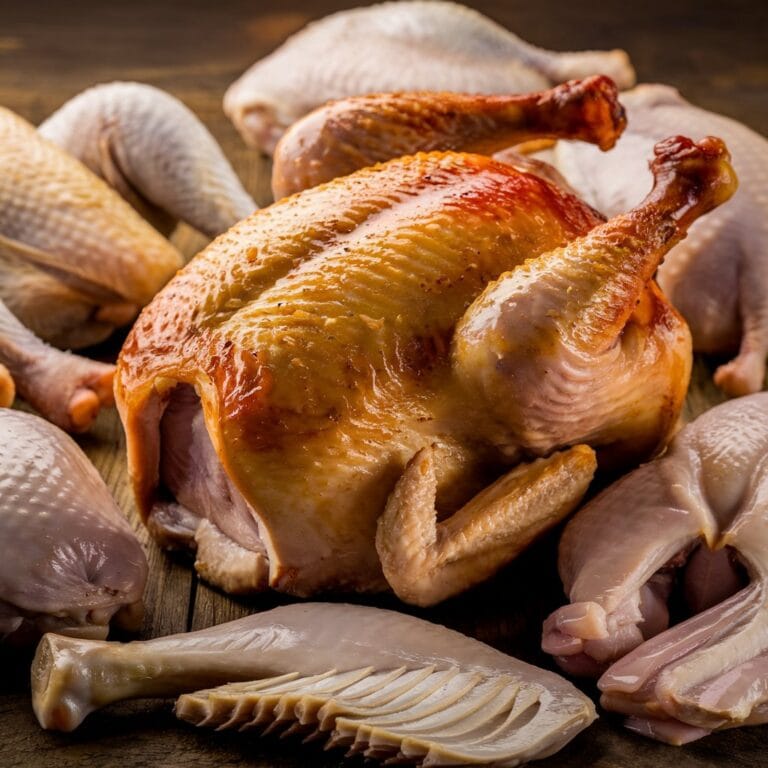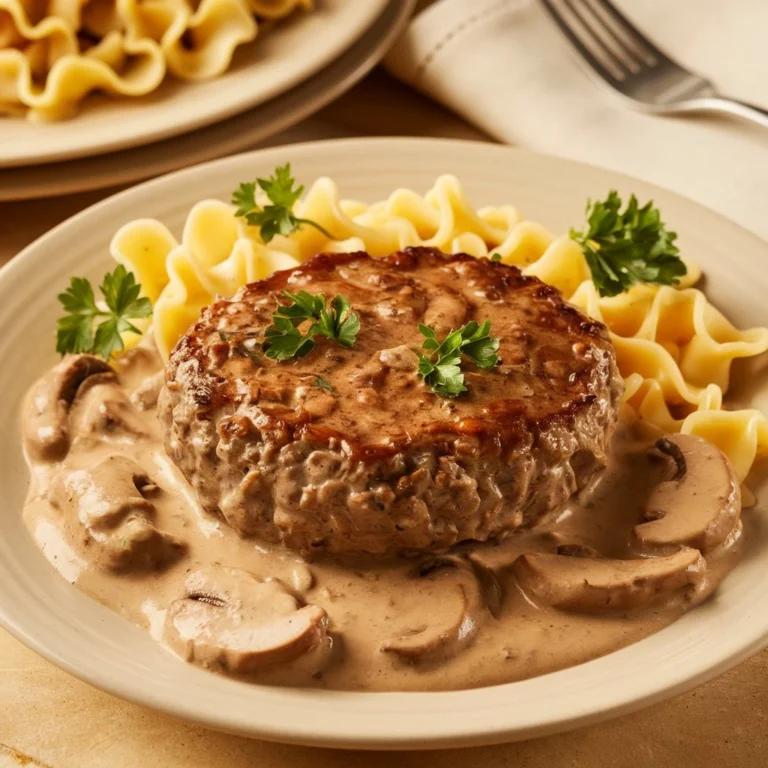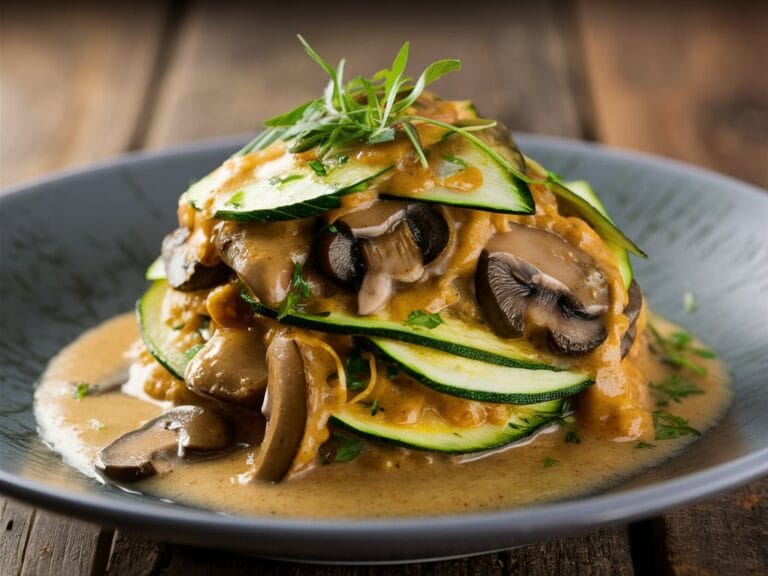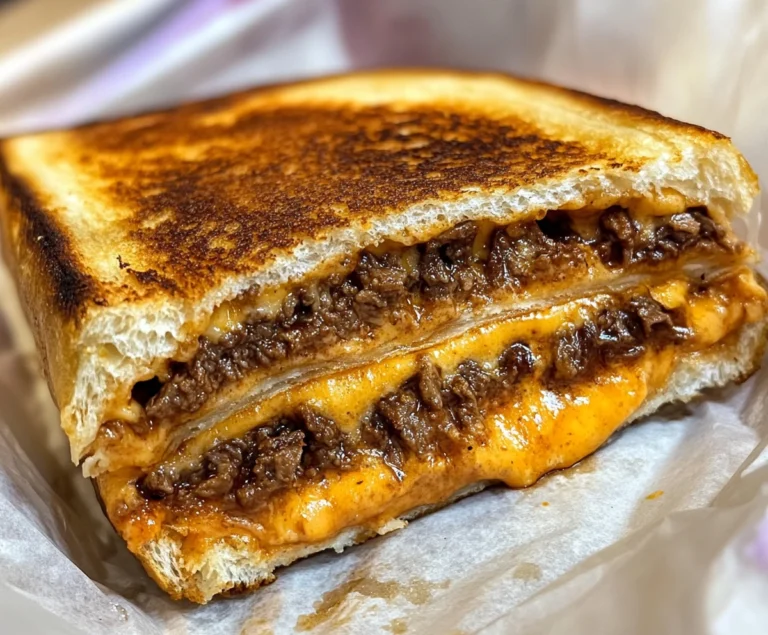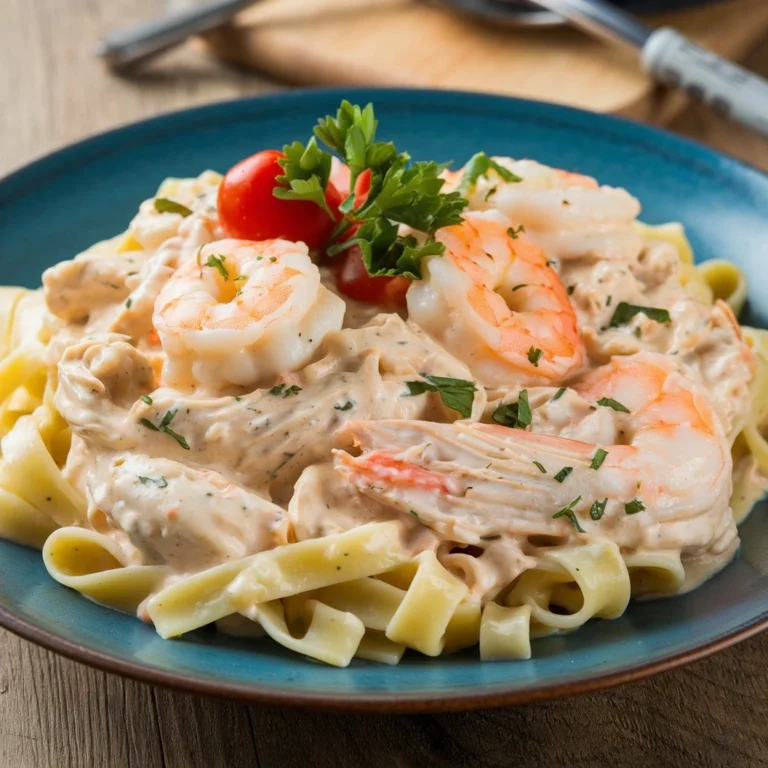What is the Sauce on Meatloaf Made Of? A Comprehensive Guide
What is the Sauce on Meatloaf Made Of? A Comprehensive Guide
Meatloaf is an enduring comfort food that graces dinner tables across the globe. One of the essential elements that transforms this humble dish into something extraordinary is the sauce or glaze applied on top. Whether you’re a fan of a tangy, sweet, spicy, or smoky finish, the sauce is what sets the meatloaf apart, adding layers of flavor and richness to an otherwise simple dish. But what exactly is the sauce on meatloaf made of? In this in-depth guide, we will explore traditional ingredients, popular variations, tips, common mistakes, and more.
By the time you finish reading, you’ll be well-equipped to create the perfect sauce that matches your taste preferences. Let’s dive into every possible detail about this crucial component of meatloaf, ensuring that your next meatloaf dish is a resounding success!
A Brief History of Meatloaf and its Sauce
Before diving into the sauce specifics, let’s take a quick detour into the history of meatloaf. While meatloaf as we know it today became popular in the United States, the concept of mixing ground meat with other ingredients has roots in ancient Rome. The Romans would often mix meat with bread and wine, creating a dish not unlike today’s meatloaf.
The use of sauces to enhance meatloaf is a relatively modern addition, coming into prominence during the 20th century when ingredients like ketchup and canned tomatoes became widely available. Over time, home cooks began experimenting with different ingredients, and thus, the traditional sweet and tangy ketchup-based glaze was born.
Now that we understand the background, let’s break down what typically goes into meatloaf sauce.
Traditional Ingredients in Meatloaf Sauce
The traditional sauce or glaze applied to meatloaf usually consists of a few key ingredients that combine to create a perfectly balanced topping. This blend offers a contrast to the savory meat, adding sweetness, tanginess, and a bit of sharpness.
1. Ketchup
Ketchup is typically the base of most meatloaf sauces. Its tomatoey sweetness provides a neutral foundation that balances both sweet and acidic components. Ketchup is also rich in umami flavors, which enhances the overall savory notes of the meatloaf. If you want to experiment with other bases, some people also use tomato paste, but ketchup remains the go-to option for most.
2. Brown Sugar
Brown sugar is the next key ingredient, which lends rich sweetness to the sauce. It helps to caramelize the glaze as the meatloaf bakes, creating a glossy, slightly sticky finish that many people love. Some healthier alternatives to brown sugar include honey, maple syrup, or agave nectar, but each will affect the final taste and texture of the glaze.
3. Vinegar
Vinegar is crucial for adding a tangy punch that cuts through the richness of the meatloaf. Most recipes use apple cider vinegar, but you can experiment with other types like white vinegar, balsamic vinegar, or even red wine vinegar for a different depth of flavor. Vinegar helps balance the sweetness from the ketchup and sugar, keeping the sauce from becoming overwhelmingly sweet.
4. Worcestershire Sauce
A small amount of Worcestershire sauce goes a long way in adding an umami boost and depth to the glaze. Worcestershire sauce is made from a mixture of fermented ingredients, giving it a unique and complex flavor profile that complements the meatloaf well. If you’re out of Worcestershire sauce, you can substitute it with soy sauce, though the taste won’t be as rich.
5. Mustard
Mustard, whether you use yellow mustard or Dijon mustard, adds a layer of sharpness and helps to balance the other flavors. It introduces a bit of heat and acidity that pairs beautifully with the sweetness of the brown sugar and the tang from the vinegar.
Common Variations of Meatloaf Sauce
One of the best things about meatloaf sauce is its versatility. While the traditional ketchup-brown sugar-vinegar combo is beloved by many, there are countless ways to modify the sauce to better suit your taste preferences. Here are some popular variations:
1. Spicy Meatloaf Sauce
If you like your food with a bit of heat, you can easily turn your meatloaf sauce into a spicy version. Add a dash of Sriracha, Tabasco, or another hot sauce to the mixture. You can also sprinkle in cayenne pepper or chili powder to give the glaze an extra kick. The heat pairs well with the inherent sweetness from the ketchup and brown sugar.
2. Barbecue-Based Meatloaf Sauce
Another variation that has grown increasingly popular is a barbecue-based glaze. By mixing ketchup with your favorite BBQ sauce, you can create a smoky, tangy glaze that adds a new dimension to the meatloaf. The key here is choosing a high-quality BBQ sauce that complements the other ingredients. For a great BBQ-based sauce, check out The Ultimate Meatloaf Sauce Recipe.
3. Italian-Style Sauce
For those who love Mediterranean flavors, an Italian-style sauce can be a delightful twist. Instead of using ketchup, use tomato paste as your base. Mix in Italian herbs such as basil, oregano, and garlic powder to create a more robust, savory sauce. This version pairs particularly well with meatloaf recipes that include Italian-style seasonings like Parmesan and parsley.
4. Asian-Inspired Meatloaf Sauce
If you’re in the mood for something a little different, try an Asian-inspired meatloaf sauce. Combine ketchup with soy sauce, sesame oil, and hoisin sauce. You can also add a splash of rice vinegar for tanginess. The soy sauce brings in a salty umami flavor, while the hoisin adds sweetness and depth. This variation is perfect if you want to give your meatloaf an Asian fusion twist.
5. Gluten-Free or Low-Sugar Sauces
For those with dietary restrictions, it’s entirely possible to make a gluten-free or low-sugar version of the sauce. Simply swap out regular ketchup for a no-sugar-added ketchup and use a gluten-free soy sauce instead of Worcestershire. Brown sugar can be replaced with a natural sweetener like monk fruit or stevia to make it diabetic-friendly.
You can explore other creative sauces that pair well with meat dishes, like in this Honey Bourbon Barbecue Chicken Recipe.
How to Make the Classic Meatloaf Sauce: Step-by-Step Guide
Making meatloaf sauce is quick and easy, but precision matters to get the balance of sweet, tangy, and savory just right. Here’s a simple step-by-step guide:
Ingredients:
- 1/2 cup of ketchup
- 2 tablespoons of brown sugar (or alternative sweeteners like honey or maple syrup)
- 1 tablespoon of apple cider vinegar
- 1 teaspoon of Worcestershire sauce (or soy sauce)
- 1 teaspoon of mustard (yellow or Dijon)
Directions:
- Mix the Ingredients: In a small bowl, combine the ketchup, brown sugar, vinegar, Worcestershire sauce, and mustard. Stir until all ingredients are thoroughly mixed and the sugar has dissolved.
- Taste and Adjust: Taste the sauce and adjust to your preference. If it’s too sweet, add more vinegar. If it’s too tangy, you can balance it with a little more brown sugar. For a spicier kick, add a pinch of cayenne pepper or a dash of hot sauce.
- Simmer (Optional): For a more concentrated flavor, you can simmer the sauce for 5-10 minutes. This will thicken the sauce slightly and deepen the flavors.
- Apply the Sauce: Brush the sauce generously over the top of the meatloaf before baking. For an extra glossy finish, you can reserve some sauce to brush on during the last 10 minutes of cooking.
- Bake and Enjoy: Bake your meatloaf according to your recipe, and enjoy the final product with a perfectly glazed topping!
Pairing the Sauce with Different Types of Meatloaf
While the classic ketchup-based sauce is often used for beef meatloaf, you can also tailor the sauce to match other types of meatloaf. Here’s how:
1. Beef Meatloaf
For traditional beef meatloaf, the classic sweet-and-tangy glaze works best. The richness of the beef pairs well with the sweetness of the brown sugar and the acidity of the vinegar. This is the most common pairing and one that many families rely on for a comforting, home-cooked meal.
2. Turkey Meatloaf
Turkey meatloaf is a lighter alternative to beef, and because of its mild flavor, it benefits from a sauce that has a bit more sharpness. Consider increasing the amount of Worcestershire sauce and mustard to give the glaze more depth. You can also use a BBQ-based glaze to add smoky flavors that complement the lean turkey.
3. Pork Meatloaf
Pork meatloaf is a rich and flavorful option that pairs well with sweet glazes. A ketchup-brown sugar base with a touch of maple syrup or honey can enhance the natural sweetness of the pork. You can also try an Asian-inspired glaze, using hoisin sauce and soy sauce for a unique flavor profile.
4. Vegetarian or Vegan Meatloaf
Vegetarian or vegan meatloaf, made from ingredients like lentils, quinoa, or mushrooms, can be paired with a sauce that is more herb-forward. A tomato paste base with Italian herbs can complement the earthy flavors of the loaf. Alternatively, a vegan BBQ sauce or a gluten-free ketchup-based glaze can work well.
For creative pairings, consider serving your meatloaf with side dishes like this refreshing Cucumber Gazpacho that can balance out the richness of the dish.
Common Mistakes to Avoid When Making Meatloaf Sauce
Even though making meatloaf sauce is simple, there are a few common pitfalls that can affect the final outcome. Here are some mistakes to watch out for:
1. Too Sweet or Too Tangy
The balance between sweet and tangy is critical. If the sauce is too sweet, it can overpower the meatloaf, while a sauce that is too tangy might not appeal to all palates. Always taste the sauce before applying it to ensure the right balance. Adjust by adding more vinegar if it’s too sweet or more brown sugar if it’s too tangy.
2. Runny Sauce
A thin, watery sauce can ruin the texture of the glaze. To prevent this, make sure you simmer the sauce for a few minutes to reduce and thicken it. You can also add a small amount of cornstarch mixed with water to thicken the sauce if needed.
3. Burning the Sauce
When baking meatloaf, it’s easy for the sauce to burn if applied too early. To avoid this, apply the sauce during the last 10-15 minutes of baking, or use foil to tent the meatloaf for most of the cooking time, removing it only for the last few minutes.
Nutritional Information & Healthier Alternatives
While traditional meatloaf sauce is delicious, it can also be high in sugar and sodium. Fortunately, there are ways to modify the sauce to make it healthier.
Low-Sugar Variations:
- No-Sugar-Added Ketchup: Opt for a ketchup that doesn’t contain added sugars.
- Natural Sweeteners: Substitute brown sugar with honey, agave syrup, or maple syrup. For an even lower-calorie option, use a stevia or monk fruit sweetener.
- Low-Sodium Options: Choose low-sodium soy sauce or omit the Worcestershire sauce to cut down on sodium.
By using these substitutions, you can create a meatloaf sauce that fits within specific dietary needs without sacrificing flavor.
Frequently Asked Questions (FAQs)
What is the classic sauce for meatloaf made of?
The classic meatloaf sauce is made from ketchup, brown sugar, vinegar, Worcestershire sauce, and mustard.
Can you use BBQ sauce instead of ketchup in meatloaf sauce?
Yes, BBQ sauce is a great alternative. It adds a smoky, tangy flavor to the glaze. Try combining it with ketchup for a balanced taste. For more ideas, see this Baked Chicken Cutlet Recipe which uses a savory sauce for inspiration.
How do I make meatloaf sauce less sweet?
To reduce sweetness, decrease the amount of brown sugar and increase the vinegar or mustard to balance out the flavors.
How long does meatloaf sauce last in the fridge?
Meatloaf sauce will last for about 5-7 days when stored in an airtight container in the refrigerator.
Can I make the sauce ahead of time?
Yes, you can make the sauce in advance and store it in the refrigerator. This makes meal prep easier and allows the flavors to meld together.
Conclusion
The sauce on meatloaf plays a crucial role in transforming a simple dish into a flavorful masterpiece. Whether you stick with the traditional ketchup and brown sugar glaze or experiment with variations like BBQ, spicy, or Asian-inspired sauces, the possibilities are endless. With the tips and techniques outlined in this guide, you’ll be able to create a perfect sauce for any type of meatloaf, ensuring a dish that will be both comforting and delicious.
Don’t forget to explore additional recipes and ideas on Aurelia Recipes for even more culinary inspiration!


